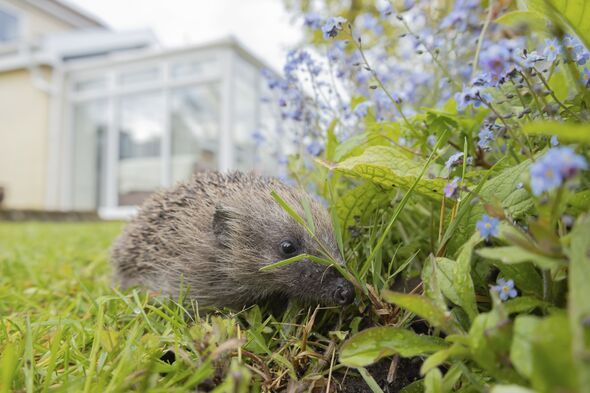
Hedgehog populations have been on the decline for years, with some experts estimating that as much as 75% has vanished since 2000. Extreme weather conditions, such as heat, can be a major hazard to these little creatures, but anyone with a garden can lend a hand with just a few minor adjustments. MyBuilder has unveiled a guide to constructing the ideal 'hedgehog home', as part of their Trade to the Rescue campaign.
This comes especially after some pre-made plastic hedgehog homes were deemed unfit for purpose. These homes offer protection from the elements and predators, allowing hedgehogs to rest or hibernate depending on theseason.

To build one from scratch, you'll require some wooden sheets, nails and a hammer. Hedgehog homes are typically just a square box with a small entrance tunnel.
It's crucial to also build or attach some small feet to lift the house off the ground to prevent dampness, and attaching the roof with hinges can facilitate easier cleaning. Line the inside with newspaper or straw as natural bedding and wrap the house in polythene sheeting for insulation.
It's best to position the house in a quiet, shaded corner of the garden that's shielded from wind or rain, ideally with the entrance facing south. The experts warned against painting the interior, using plastic or placing food inside as this can be toxic to the hedgehogs or attract other pests.
Andy Simms from MyBuilder.com said: "Sadly, many major housebuilders have reneged on their promises to construct new developments with wildlife friendly features, such as hedgehog highways or tunnels. This has contributed to the issue of habitat loss and declining numbers.
"Providing a hedgehog with a little house is a simple, inexpensive, and convenient way to play your part in rescuing our spiky friends, and getting those numbers back up, and we'd love to help."

If you're can't commit to a full-blown hedgehog home, there are still plenty of ways to make your garden a haven for these charming creatures, especially during the warmer months. Start simply by leaving a patch of garden untouched.
Experts suggest that having 'wild' areas in your garden can attract the insects and worms that form the bulk of a hedgehog's diet. They also recommend planting a border of wildflowers to create an attractive meadow edge that not only looks good but serves a vital purpose.
To aid thirsty hedgehogs, consider providing water sources, these animals require just about two tablespoons of water daily, so placing a shallow bowl out every couple of days should be enough to make a difference.
Additionally, uncovered drains pose a significant risk to hedgehogs who may fall in during their nocturnal wanderings and find themselves unable to escape, making them easy prey.
Covering these can be a simple fix but if you plan to build over your drain permanently, you may need permission from your local authority.









